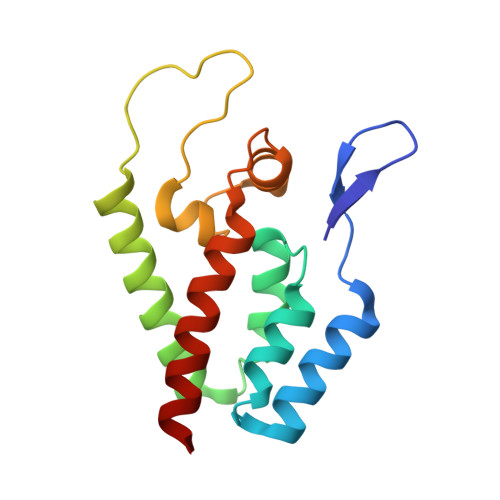HIV-1 uses dynamic capsid pores to import nucleotides and fuel encapsidated DNA synthesis.
Jacques, D.A., McEwan, W.A., Hilditch, L., Price, A.J., Towers, G.J., James, L.C.(2016) Nature 536: 349-353
- PubMed: 27509857
- DOI: https://doi.org/10.1038/nature19098
- Primary Citation of Related Structures:
5HGK, 5HGL, 5HGM, 5HGN, 5HGO, 5HGP, 5JPA - PubMed Abstract:
During the early stages of infection, the HIV-1 capsid protects viral components from cytosolic sensors and nucleases such as cGAS and TREX, respectively, while allowing access to nucleotides for efficient reverse transcription. Here we show that each capsid hexamer has a size-selective pore bound by a ring of six arginine residues and a 'molecular iris' formed by the amino-terminal β-hairpin. The arginine ring creates a strongly positively charged channel that recruits the four nucleotides with on-rates that approach diffusion limits. Progressive removal of pore arginines results in a dose-dependent and concomitant decrease in nucleotide affinity, reverse transcription and infectivity. This positively charged channel is universally conserved in lentiviral capsids despite the fact that it is strongly destabilizing without nucleotides to counteract charge repulsion. We also describe a channel inhibitor, hexacarboxybenzene, which competes for nucleotide binding and efficiently blocks encapsidated reverse transcription, demonstrating the tractability of the pore as a novel drug target.















